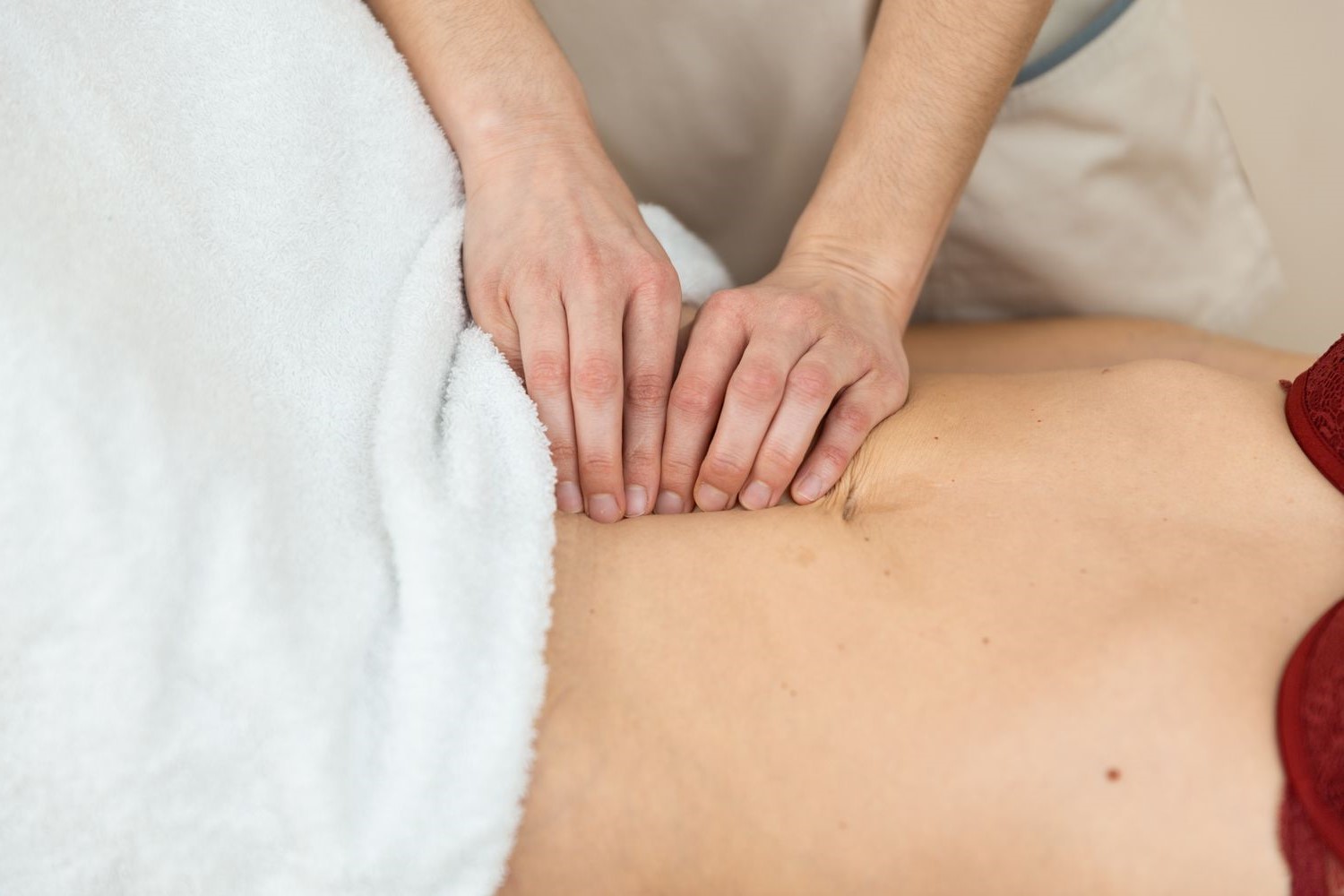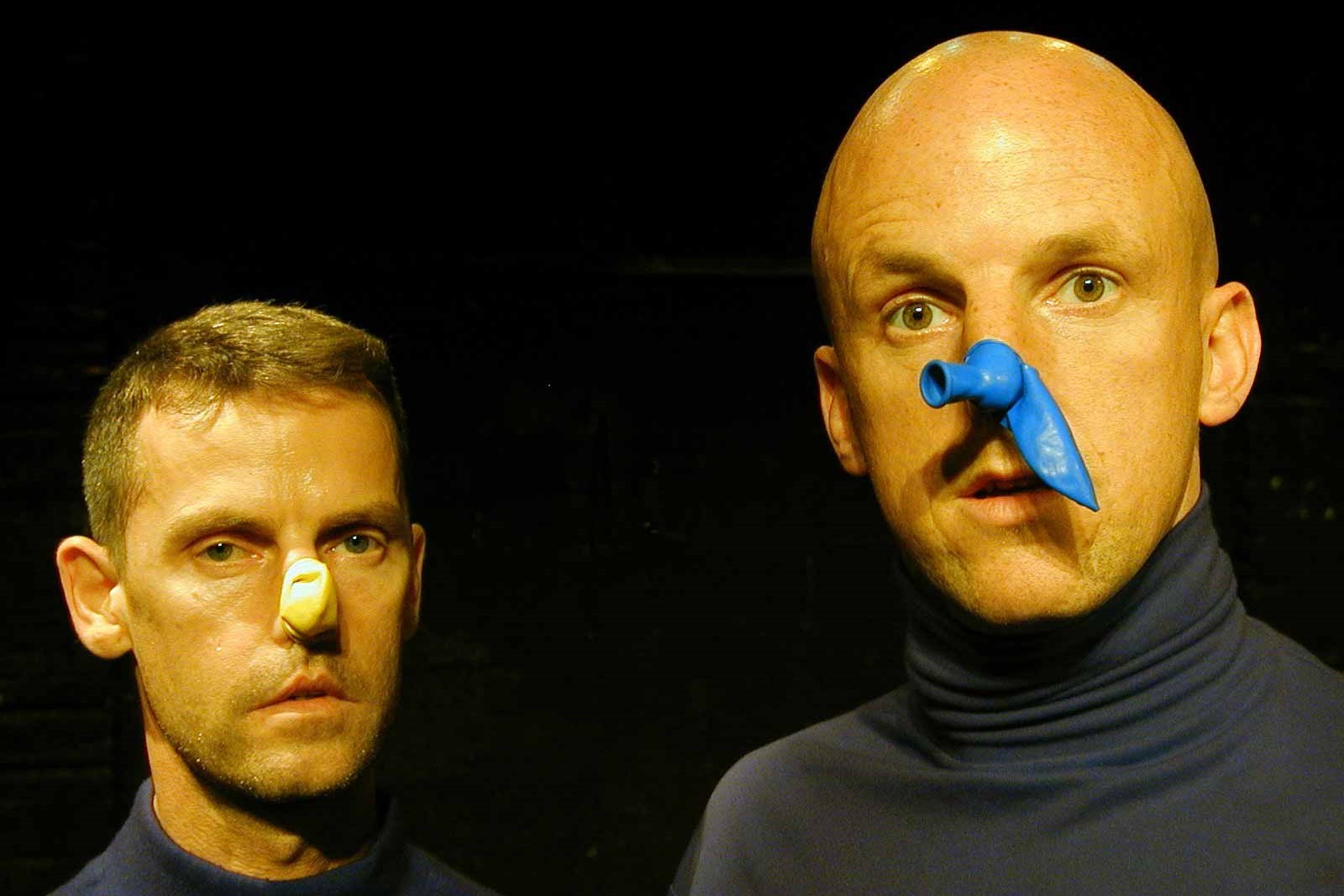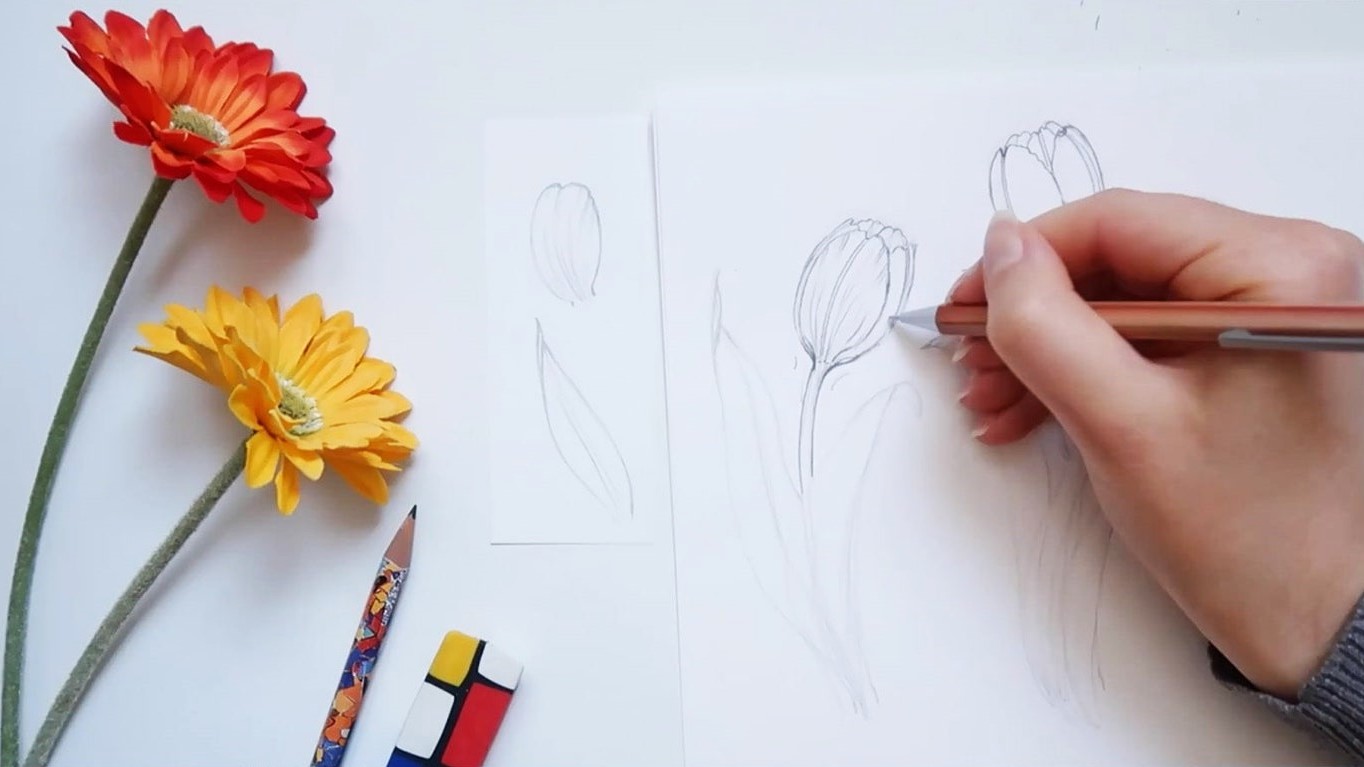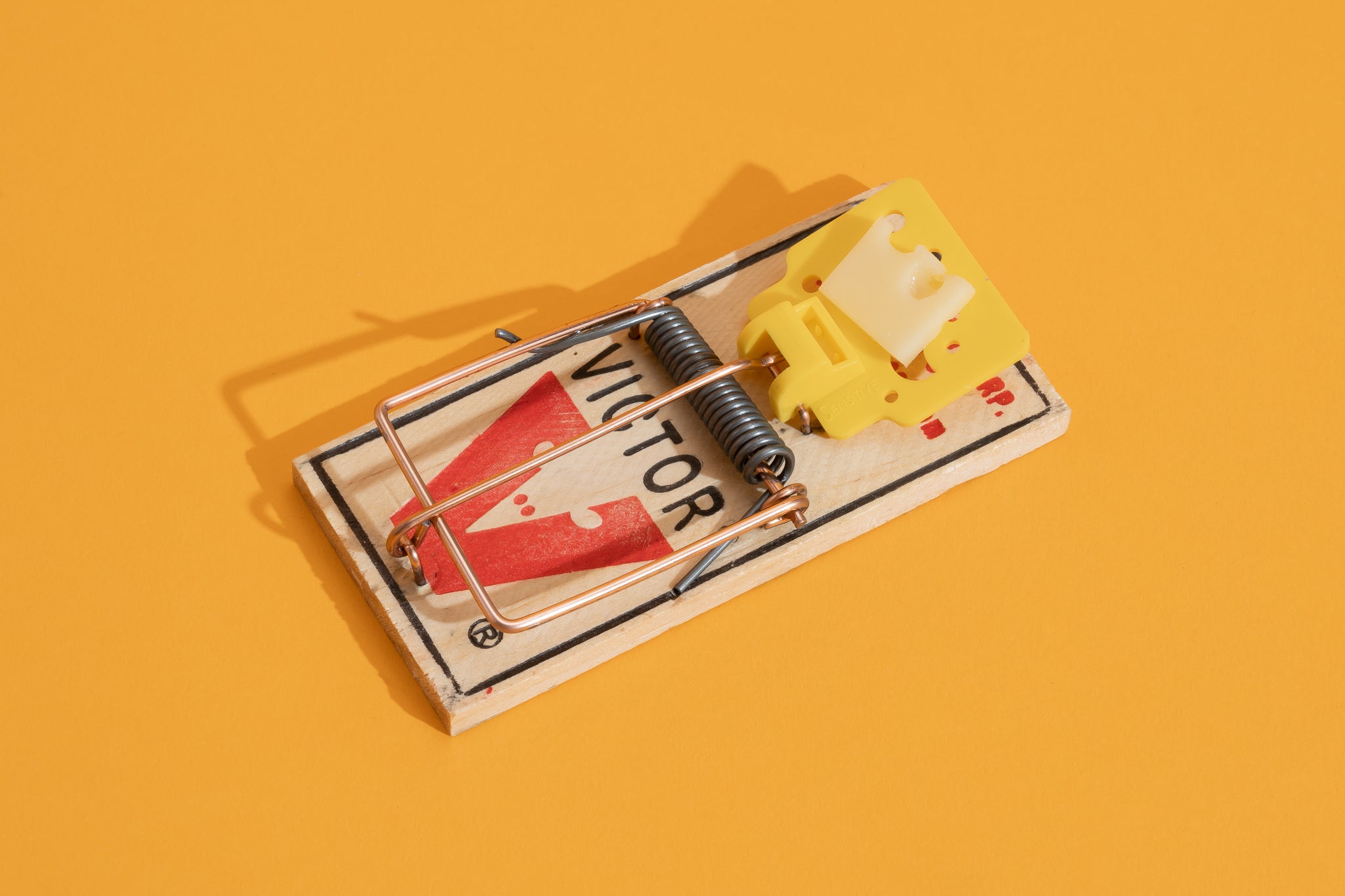Home>Health and Wellness>How To Heal Diastasis Recti


Health and Wellness
How To Heal Diastasis Recti
Published: March 3, 2024
Learn effective techniques and exercises to heal diastasis recti and improve your health and wellness. Discover expert tips and resources to support your healing journey.
(Many of the links in this article redirect to a specific reviewed product. Your purchase of these products through affiliate links helps to generate commission for Noodls.com, at no extra cost. Learn more)
Table of Contents
Introduction
Diastasis recti, a condition that commonly affects postpartum women, occurs when the abdominal muscles separate due to the stretching and weakening of the connective tissue. This condition can lead to a protruding belly and core weakness, causing discomfort and impacting daily activities. Understanding the causes, symptoms, and treatment options for diastasis recti is crucial for those affected by this condition. In this article, we will delve into the intricacies of diastasis recti, exploring its impact and providing valuable insights into the various methods for healing and managing this condition. Whether you are a new mother seeking to regain core strength or an individual experiencing the effects of diastasis recti, this comprehensive guide aims to equip you with the knowledge and resources necessary to address this common yet often misunderstood condition.
Understanding Diastasis Recti
Diastasis recti, commonly referred to as abdominal separation, occurs when the rectus abdominis muscles, which run vertically along the midline of the stomach, separate. This separation causes the connective tissue, known as the linea alba, to widen, resulting in a visible bulge or ridge in the abdomen. While this condition predominantly affects pregnant and postpartum women, it can also occur in men and individuals who have experienced significant weight fluctuations.
During pregnancy, the uterus expands to accommodate the growing fetus, placing immense pressure on the abdominal muscles and causing the connective tissue to stretch and weaken. This physiological process often leads to diastasis recti, which may persist postpartum if the muscles fail to regain their original position and strength.
Understanding the severity of diastasis recti involves recognizing the varying degrees of muscle separation. While a mild separation may result in a slight protrusion of the abdomen, more severe cases can lead to functional impairments and discomfort. It's essential to differentiate between cosmetic concerns and the potential impact on core stability and overall well-being.
Moreover, diastasis recti can extend beyond the aesthetic implications, as it may contribute to lower back pain, pelvic floor dysfunction, and compromised posture. By comprehending the multifaceted nature of this condition, individuals can seek appropriate interventions to address both the physical and functional aspects of diastasis recti.
In essence, understanding diastasis recti entails acknowledging its underlying anatomical changes, its impact on daily activities, and its potential to affect overall physical health. By gaining insight into the complexities of this condition, individuals can make informed decisions regarding treatment and lifestyle adjustments to promote healing and enhance their quality of life.
Causes of Diastasis Recti
Diastasis recti primarily stems from the stretching and weakening of the linea alba, the connective tissue that holds the rectus abdominis muscles together. The most common cause of this condition is pregnancy, as the expanding uterus exerts significant pressure on the abdominal wall, leading to the separation of the abdominal muscles. This physiological process is a natural consequence of the body's adaptation to accommodate the growing fetus. However, certain factors can exacerbate the likelihood and severity of diastasis recti.
Multiple pregnancies or carrying a large baby can increase the risk of developing diastasis recti, as the abdominal muscles undergo prolonged and heightened strain. Additionally, improper lifting techniques during pregnancy or postpartum, as well as engaging in high-impact exercises without adequate core support, can contribute to the development of this condition.
Beyond pregnancy-related causes, other factors such as excessive weight gain, particularly in the abdominal region, can strain the abdominal muscles and exacerbate the separation. Individuals who experience rapid weight fluctuations, whether due to lifestyle changes or medical conditions, may also be susceptible to diastasis recti.
Furthermore, age-related changes in connective tissue elasticity can play a role in the development of diastasis recti. As individuals age, the collagen and elastin fibers in the connective tissue may become less resilient, potentially increasing the likelihood of muscle separation.
It's important to note that while pregnancy is the primary cause of diastasis recti, this condition can also affect men and individuals who have never been pregnant. Factors such as excessive abdominal pressure from heavy lifting, chronic coughing, or certain abdominal exercises performed with poor form can contribute to the development of diastasis recti in non-pregnant individuals.
Understanding the diverse array of factors that can lead to diastasis recti is crucial for both prevention and effective management. By recognizing the various causes and risk factors associated with this condition, individuals can take proactive measures to mitigate the likelihood of muscle separation and seek appropriate interventions to promote healing and recovery.
Symptoms of Diastasis Recti
Diastasis recti manifests through a range of physical symptoms that can significantly impact an individual's daily life. Understanding these symptoms is essential for recognizing the presence of this condition and seeking appropriate interventions to address its effects.
One of the primary symptoms of diastasis recti is the visible protrusion or bulge in the midsection. This protrusion, often described as a ridge or gap running along the midline of the abdomen, becomes more pronounced when the individual engages in activities that require abdominal exertion, such as sitting up from a lying position or performing certain exercises. The prominence of this bulge may vary based on the severity of the muscle separation and the individual's body composition.
In addition to the visible bulge, individuals with diastasis recti may experience core weakness and instability. This can lead to difficulties in performing routine tasks that involve core engagement, such as lifting heavy objects, standing for prolonged periods, or maintaining proper posture. The weakened abdominal muscles may also contribute to lower back pain and discomfort, as the core plays a crucial role in providing support and stability for the spine.
Furthermore, diastasis recti can be accompanied by functional impairments related to the pelvic floor. The weakening of the abdominal muscles and connective tissue can impact pelvic floor function, potentially leading to issues such as urinary incontinence, pelvic organ prolapse, and discomfort during sexual intercourse. These symptoms underscore the interconnectedness of the core muscles and their role in maintaining pelvic and abdominal health.
Beyond the physical manifestations, individuals with diastasis recti may also experience emotional and psychological effects. The visible changes in abdominal appearance can impact self-esteem and body image, particularly for postpartum women. Addressing these emotional aspects is an integral part of comprehensive care for individuals affected by diastasis recti, as it encompasses both the physical and emotional well-being of the individual.
Recognizing these symptoms and their potential impact on daily life is crucial for prompt diagnosis and intervention. By understanding the multifaceted nature of diastasis recti symptoms, individuals can seek appropriate treatment and lifestyle modifications to alleviate discomfort, improve core strength, and enhance overall well-being.
Diagnosing Diastasis Recti
Diagnosing diastasis recti involves a comprehensive assessment that encompasses both physical examination and, in some cases, imaging studies. Healthcare providers, including obstetricians, physical therapists, and other specialists, employ various techniques to accurately evaluate the presence and severity of diastasis recti in individuals presenting with abdominal concerns.
During a physical examination, healthcare providers typically palpate the abdominal area to assess the degree of separation between the rectus abdominis muscles. This involves gently pressing along the midline of the abdomen while the individual performs specific movements, such as lifting the head and shoulders off the ground. The palpation helps determine the width and depth of the separation, providing valuable insight into the severity of the condition.
In addition to palpation, healthcare providers may utilize measuring techniques to quantify the extent of muscle separation. This often involves using calipers or specific measurements to assess the distance between the separated muscle edges. By obtaining precise measurements, healthcare providers can categorize the severity of diastasis recti and tailor treatment recommendations accordingly.
In some instances, imaging studies such as ultrasound or magnetic resonance imaging (MRI) may be employed to visualize the abdominal muscles and assess the degree of separation more accurately. Ultrasound imaging allows for real-time visualization of the abdominal wall, enabling healthcare providers to observe the extent of muscle separation and the condition of the connective tissue. MRI scans provide detailed cross-sectional images of the abdominal muscles, offering valuable insights into the structural integrity and degree of separation.
Furthermore, healthcare providers may assess functional aspects related to diastasis recti, such as core strength and stability, through specific physical tests and evaluations. These assessments help determine the impact of muscle separation on the individual's ability to engage in daily activities and identify any associated functional impairments.
It is important to note that self-assessment techniques, such as the "finger-width" method, where individuals measure the gap between their abdominal muscles, may provide initial indications of diastasis recti. However, a formal diagnosis and comprehensive evaluation by a healthcare professional are essential for accurate assessment and personalized management strategies.
By employing a combination of physical examination, measurements, and imaging studies, healthcare providers can effectively diagnose diastasis recti and develop tailored treatment plans to address the specific needs of individuals affected by this condition. This comprehensive approach ensures that the diagnosis accounts for the severity of muscle separation, functional implications, and individualized considerations, laying the foundation for targeted interventions and holistic care.
Treatment Options
Addressing diastasis recti involves a multifaceted approach aimed at promoting healing, strengthening the abdominal muscles, and improving core stability. The treatment options for diastasis recti encompass a range of non-invasive interventions, including targeted exercises, lifestyle modifications, and, in some cases, surgical procedures. By tailoring the treatment plan to the individual's specific needs and the severity of the condition, healthcare providers can effectively guide individuals toward recovery and enhanced well-being.
Physical Therapy and Exercise Programs
Physical therapy plays a pivotal role in the management of diastasis recti, offering specialized exercise programs designed to strengthen the abdominal muscles and promote the realignment of the rectus abdominis. These programs often incorporate targeted movements that engage the core muscles while emphasizing proper breathing techniques and alignment. By working with a skilled physical therapist, individuals can benefit from personalized exercise regimens that address their unique muscle separation and functional needs.
Specific exercises, such as pelvic tilts, transverse abdominal activations, and modified planks, are commonly included in physical therapy programs for diastasis recti. These exercises focus on activating the deep core muscles and promoting gradual improvement in muscle tone and alignment. Additionally, incorporating gentle stretching and mobility exercises can help alleviate tension and discomfort in the abdominal region, supporting the overall healing process.
Lifestyle Modifications
In conjunction with targeted exercises, lifestyle modifications play a crucial role in the treatment of diastasis recti. Individuals are advised to avoid activities and movements that place excessive strain on the abdominal muscles, such as heavy lifting, intense abdominal exercises, and prolonged periods of unsupported sitting. Implementing proper body mechanics during daily activities, including lifting and carrying, can help prevent further exacerbation of the muscle separation.
Furthermore, maintaining good posture and engaging in activities that promote overall core strength, such as swimming and walking, can contribute to the gradual improvement of diastasis recti. Embracing a balanced and nutritious diet supports overall physical health and can aid in managing weight fluctuations, which may impact the severity of the condition.
Supportive Garments and Orthotics
Supportive garments, such as abdominal binders and specialized braces, may be recommended to provide external support to the abdominal muscles and promote proper alignment. These garments can offer gentle compression, which may help individuals feel more supported during daily activities and reduce discomfort associated with diastasis recti. Additionally, orthotic devices, such as pelvic support belts, can assist in stabilizing the pelvic region and alleviating strain on the abdominal muscles, particularly during movements that involve weight-bearing and core engagement.
Surgical Interventions
In cases where conservative measures do not yield significant improvement or when the severity of diastasis recti poses functional limitations, surgical interventions may be considered. Abdominoplasty, commonly known as a tummy tuck, is a surgical procedure that involves repairing the separated abdominal muscles and removing excess skin and fat from the abdominal region. This procedure aims to restore core strength and contour the abdomen, addressing both the functional and aesthetic concerns associated with diastasis recti.
It is important to note that surgical interventions are typically reserved for individuals with persistent and severe diastasis recti, and the decision to undergo surgery should be carefully evaluated in consultation with a qualified healthcare provider.
By integrating these treatment options and individualizing the approach based on the specific needs of each patient, healthcare providers can guide individuals toward effective management of diastasis recti, promoting healing, functional improvement, and enhanced quality of life.
Exercises for Healing Diastasis Recti
Physical therapy and targeted exercises play a pivotal role in the comprehensive treatment of diastasis recti, focusing on strengthening the abdominal muscles and promoting the realignment of the rectus abdominis. These exercises are designed to address the specific needs of individuals with diastasis recti, facilitating gradual improvement in muscle tone, core stability, and functional strength.
Pelvic Tilts
Pelvic tilting exercises are instrumental in engaging the deep core muscles and promoting alignment of the abdominal wall. To perform pelvic tilts, individuals lie on their back with knees bent and feet flat on the floor. By gently tilting the pelvis upward and flattening the lower back against the floor, the deep abdominal muscles are activated, contributing to the gradual realignment of the rectus abdominis.
Transverse Abdominal Activations
Targeting the transverse abdominis, the deepest layer of the abdominal muscles, is essential for promoting core stability and addressing diastasis recti. Transverse abdominal activation exercises involve drawing the navel inward toward the spine while maintaining normal breathing. This activation engages the deep core muscles, fostering improved muscle tone and support for the abdominal wall.
Read more: The Ultimate Guide To Healing Receding Gums
Modified Planks
Modified planks are effective in strengthening the entire core, including the rectus abdominis, without placing excessive strain on the abdominal muscles. Individuals can perform modified planks by assuming a plank position on their forearms and knees, focusing on maintaining a neutral spine and engaging the core muscles. This exercise supports the gradual improvement of abdominal strength and stability, contributing to the healing process for diastasis recti.
Breathing Techniques
Incorporating proper breathing techniques into exercise regimens is crucial for individuals with diastasis recti. Emphasizing diaphragmatic breathing, which involves deep inhalation and exhalation while engaging the abdominal muscles, supports the activation of the core and promotes overall muscle coordination. By integrating breathing techniques into exercise routines, individuals can enhance the effectiveness of targeted movements and facilitate the healing of diastasis recti.
Gentle Stretching and Mobility Exercises
In addition to targeted strengthening exercises, gentle stretching and mobility movements can alleviate tension and discomfort in the abdominal region. Incorporating exercises that promote flexibility and range of motion, such as gentle yoga poses and controlled stretching routines, supports overall muscle health and contributes to the holistic approach to healing diastasis recti.
By integrating these targeted exercises into a comprehensive physical therapy program, individuals with diastasis recti can experience gradual improvement in abdominal strength, core stability, and functional well-being. Working closely with a skilled physical therapist ensures that the exercise regimen is tailored to the specific needs of each individual, promoting effective healing and long-term management of diastasis recti.
Lifestyle Changes for Healing Diastasis Recti
In addition to targeted exercises and medical interventions, incorporating specific lifestyle changes is instrumental in promoting the healing of diastasis recti and supporting overall well-being. These lifestyle modifications aim to minimize strain on the abdominal muscles, enhance core stability, and facilitate the gradual realignment of the rectus abdominis, contributing to the comprehensive management of this condition.
Maintaining proper body mechanics during daily activities is paramount for individuals with diastasis recti. This includes adopting safe lifting techniques, such as bending at the knees and using the legs to lift objects, rather than relying solely on the abdominal muscles. By implementing these proper body mechanics, individuals can reduce the risk of exacerbating the muscle separation and minimize strain on the weakened abdominal wall.
Furthermore, avoiding activities that place excessive strain on the abdominal muscles is essential for promoting healing. Engaging in high-impact exercises that heavily recruit the core muscles, such as intense abdominal workouts and heavy resistance training, may exacerbate diastasis recti. Instead, individuals are encouraged to focus on low-impact exercises that support overall core strength without placing undue pressure on the abdominal wall. Activities such as swimming, walking, and gentle yoga can contribute to the gradual improvement of diastasis recti while promoting overall physical health.
Embracing good posture throughout daily activities is crucial for individuals with diastasis recti. Maintaining proper alignment of the spine and pelvis reduces unnecessary strain on the abdominal muscles and supports core stability. Individuals are advised to be mindful of their posture while sitting, standing, and performing daily tasks, as this can alleviate discomfort and contribute to the healing process.
Incorporating a balanced and nutritious diet is integral to the overall well-being of individuals with diastasis recti. A diet rich in essential nutrients, including lean proteins, fruits, vegetables, and whole grains, supports the body's healing processes and contributes to overall physical health. Additionally, managing weight fluctuations through healthy eating habits can positively impact the severity of diastasis recti, as excessive abdominal weight can exacerbate the muscle separation.
By implementing these lifestyle changes, individuals can actively contribute to the healing of diastasis recti and support the effectiveness of targeted treatments and exercises. These modifications, when combined with personalized medical guidance and physical therapy, form a holistic approach to managing diastasis recti, promoting healing, and enhancing overall well-being.
Surgical Options
In cases where conservative measures do not yield significant improvement or when the severity of diastasis recti poses functional limitations, surgical interventions may be considered. One of the most common surgical procedures for addressing diastasis recti is abdominoplasty, commonly known as a tummy tuck. This surgical intervention aims to repair the separated abdominal muscles and remove excess skin and fat from the abdominal region, ultimately restoring core strength and contouring the abdomen.
During an abdominoplasty procedure, the surgeon makes an incision in the lower abdominal area, allowing access to the underlying abdominal muscles. The rectus abdominis muscles are then brought together and sutured, effectively closing the gap that resulted from the muscle separation. This repair of the abdominal wall contributes to improved core stability and functional strength, addressing the underlying concerns associated with diastasis recti.
In addition to muscle repair, excess skin and fat in the abdominal region are carefully excised during the procedure. This not only enhances the aesthetic appearance of the abdomen but also reduces the additional weight and strain on the abdominal muscles, supporting the long-term management of diastasis recti. By addressing both the functional and cosmetic aspects of the condition, abdominoplasty offers comprehensive benefits for individuals with persistent and severe diastasis recti.
It is important to note that surgical interventions, including abdominoplasty, are typically reserved for individuals with significant and enduring diastasis recti. The decision to undergo surgery should be carefully evaluated in consultation with a qualified healthcare provider. Prior to the procedure, individuals undergo thorough pre-operative assessments to ensure they are suitable candidates for surgery and to discuss the potential risks and benefits associated with the intervention.
Following abdominoplasty, individuals undergo a period of recovery and post-operative care, during which they are advised to follow specific guidelines to facilitate healing and optimize outcomes. This may include temporary restrictions on physical activities and adherence to a personalized post-operative care plan designed to support the healing process and minimize complications.
By considering surgical options such as abdominoplasty in collaboration with experienced healthcare providers, individuals with severe diastasis recti can explore comprehensive interventions that address both the functional and aesthetic concerns associated with this condition. Surgical interventions offer a viable pathway for individuals facing persistent and debilitating diastasis recti, providing an opportunity for improved core strength, functional well-being, and enhanced quality of life.
Conclusion
In conclusion, diastasis recti presents multifaceted challenges that extend beyond the visible physical changes, impacting core strength, functional well-being, and emotional health. Understanding the causes, symptoms, and treatment options for diastasis recti is essential for individuals affected by this condition, empowering them to make informed decisions and pursue effective interventions.
The comprehensive approach to managing diastasis recti encompasses non-invasive treatments, including physical therapy, targeted exercises, and lifestyle modifications, tailored to the specific needs of each individual. These interventions aim to promote healing, strengthen the abdominal muscles, and improve core stability, fostering gradual improvement in muscle tone and functional strength.
Furthermore, surgical options such as abdominoplasty offer viable solutions for individuals with persistent and severe diastasis recti, addressing both the functional and aesthetic concerns associated with this condition. By considering surgical interventions in collaboration with experienced healthcare providers, individuals can explore comprehensive treatments that support improved core strength and enhanced quality of life.
It is crucial to emphasize the importance of seeking professional medical guidance for accurate diagnosis and personalized treatment plans. Healthcare providers, including obstetricians, physical therapists, and surgeons, play a pivotal role in guiding individuals through the management of diastasis recti, offering expertise and support throughout the healing journey.
Ultimately, the holistic approach to diastasis recti management, encompassing physical, emotional, and functional aspects, aims to empower individuals to regain core strength, alleviate discomfort, and enhance overall well-being. By integrating targeted treatments, lifestyle modifications, and, when necessary, surgical interventions, individuals can embark on a path toward healing and improved quality of life in the face of diastasis recti.











